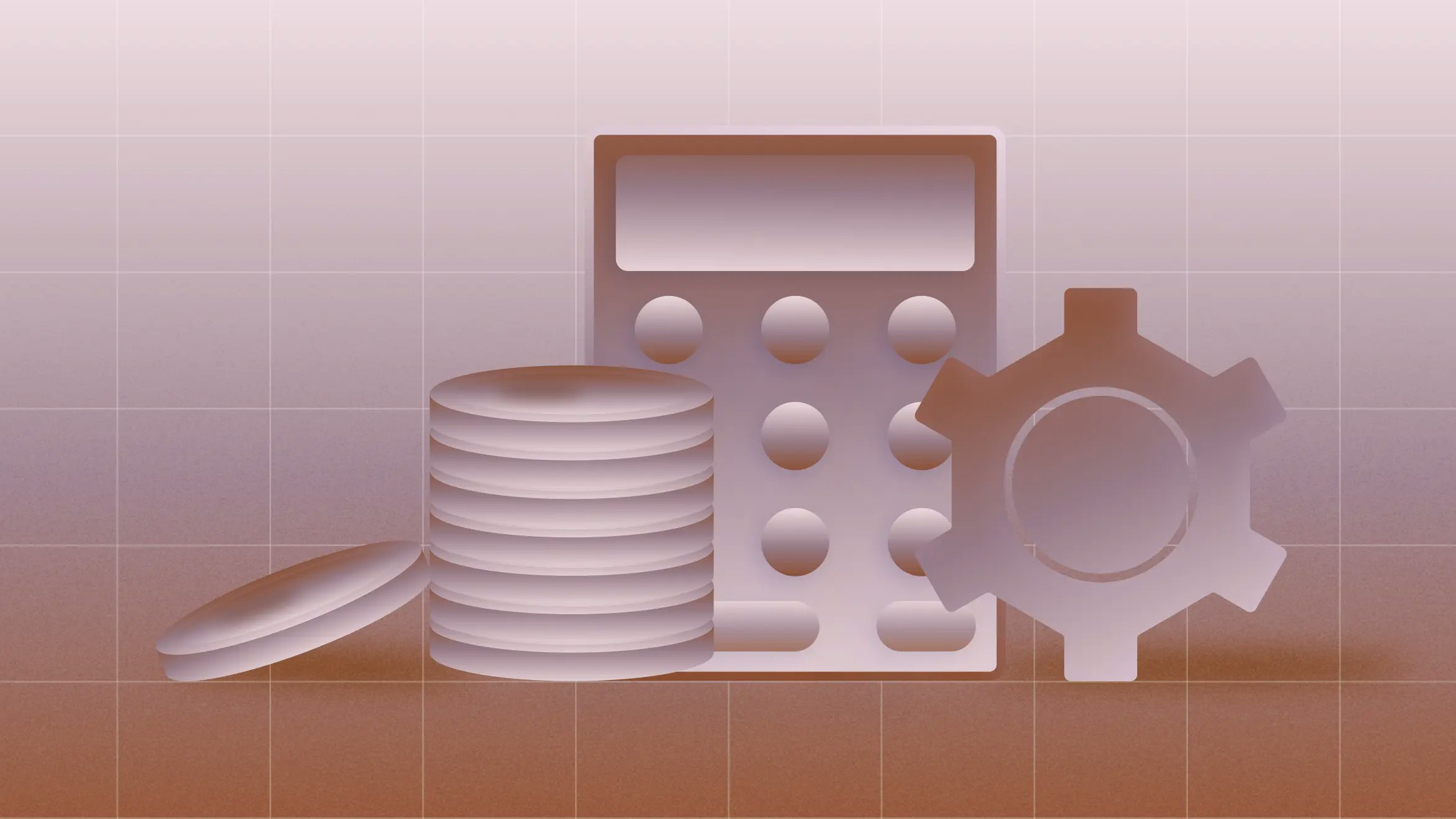The difference between fixed and variable costs

Every startup founder learns early that cash isn’t the same as profitability. But if you can’t tell which expenses change as you scale and which stay the same, you’re flying blind when it comes to your burn, runway, margins, and pricing.
That’s where understanding fixed vs. variable costs comes in. It’s one of the simplest distinctions in accounting, and one of the most misunderstood.
Fixed and variable costs determine how your expenses move as revenue grows, how much cushion you have in your burn rate, and how far your current runway can take you. Misunderstand them, and you’ll misjudge almost everything else, from your pricing and margins to how much funding you actually need to raise.
In this guide, we’ll break down what fixed and variable costs really mean, where hybrid costs fit in, and how to model them in your own business.
Why fixed and variable costs matters
Startups live and die by burn rate. If you treat every expense the same, you’ll struggle to answer some of the most important operational questions:
- What happens to your burn if you double your customer base?
- How many more team members will you need to serve 10x the volume?
- At what point does your infrastructure break even?
Understanding what’s fixed and what’s variable makes it possible to model those scenarios. It tells you how much of your spend will scale with growth, and how much will sit on your books no matter what.
For investors, that kind of clarity signals operational maturity. For you, it’s the foundation of smarter budgeting, pricing, and forecasting.
What is a fixed cost?
Fixed costs are expenses that stay the same regardless of how much you sell or produce. They’re the recurring bills that don’t fluctuate with customer volume.
Think of them as the price of keeping the lights on, whether you have one customer or one thousand.
Common examples:
- Office rent or coworking memberships
- Salaries for full-time employees
- Insurance and licenses
- Annual software subscriptions
- Depreciation and equipment leases
Why fixed costs matter
Fixed costs set your burn floor — the minimum spend your company has to cover each month before generating a dollar of revenue.
Understanding that number helps you calculate runway (how many months of operations your cash reserves can sustain) and operating leverage (how much profit you gain as revenue grows without your costs rising in lockstep).
When you increase revenue without increasing fixed costs, your margins expand. That’s why investors love businesses with high fixed costs that become more efficient at scale, software being the classic example.
Example: A SaaS startup paying $40,000/month in fixed engineering salaries and $5,000/month for hosting will still owe $45,000 even if they add zero new customers. But if they double their customer base without hiring more engineers, that same $45,000 supports twice the revenue. That's a huge gain in operating leverage.
What is a variable cost?
Variable costs are the opposite: they rise and fall in direct proportion to your revenue or production.
When you sell more, these costs go up. When you sell less, they go down.
Common examples:
- Payment processing fees
- Packaging and shipping costs
- Usage-based API fees
- Contract labor tied to project load
- Affiliate or referral commissions
Why variable costs matter
Variable costs determine your gross margin — how much of every dollar of revenue you keep after covering the expenses directly tied to that sale.
If your variable costs are too high, growth won’t translate into profit. If they’re too low, you might be leaving opportunity on the table by underinvesting in service or quality.
Tracking variable costs also helps with pricing decisions. You can model the cost per unit (or per customer) to ensure your pricing covers the variable expenses plus a healthy margin for fixed overhead and profit.
Example: Suppose your average customer pays $100 per month, but $35 of that goes to payment processing, support time, and usage-based infrastructure. Your gross margin is 65%. That’s the pool of revenue you use to cover fixed costs, and, ideally, to generate profit. Knowing $65 out of every $100 is gross profit, it's fairly easy to figure out how many customers you need to cover your fixed expenses and reach break-even.
Calculate your gross profit, profit margin, and optimal pricing using this profit margin calculator.
Hybrid or semi-variable costs
Not every expense fits neatly into one category. Many startup costs are semi-variable or step-variable, meaning they stay flat for a while, then jump once you hit a certain threshold.
Common examples:
- Utilities that rise with office usage or server load
- Tiered SaaS subscriptions (e.g., you pay $99/month until you exceed 10,000 users)
- Customer support or success headcount that scales with customer volume
Understanding these hybrid costs helps you spot inflection points in your model — the moments when your cost structure changes because of growth.
Example: Your startup uses a CRM that costs $400/month for up to 50 seats. Once your sales team expands to 51, your bill jumps to $800. That “step” in cost doesn’t show up if you’re modeling everything as perfectly variable or perfectly fixed.
How to plan for semi-variable costs
1. Identify usage tiers in your contracts or pricing plans.
2. Note the thresholds when the next cost level kicks in.
3. Build your forecast to include those step changes at projected growth milestones.
This gives you a more realistic view of burn and avoids sudden surprises when scale triggers a new round of expenses.
How to model this in your business
Once you’ve categorized your costs, you can build a simple model to see how your expenses change with growth. Start with three columns in a spreadsheet:
Expense | Type | Monthly cost |
Rent | Fixed | $4,000 |
SaaS subscriptions | Fixed | $1,500 |
Payment processing fees | Variable | 2.9% of revenue |
Contractors | Variable | $50/hour |
Support headcount | Semi-variable | $4,000 every 200 customers |
Then, model how those costs scale as your revenue increases.
Why investors care
Investors often look for signals that you understand your unit economics — how each new dollar of revenue impacts your costs and margins.
Here’s what they’re watching for:
CAC payback: How long it takes for the profit from a customer to cover what you spent to acquire them.
Contribution margin: The percentage of each dollar of revenue you keep after paying the variable costs tied to that sale. (In other words, how much revenue is left to cover your fixed costs and generate profit.)
Breakeven point: The level of sales where your total revenue finally equals your total costs, and you’re no longer burning cash to operate.
Pro tip: Even if your company isn’t profitable yet, understanding where breakeven sits shows investors you’re thinking ahead about sustainability.
Common mistakes to avoid
1. Misclassifying salaries as variable
Many founders assume hourly employees or commissions make salaries variable, but they typically don’t scale directly with production volume. Treat full-time or recurring roles as fixed, even if compensation fluctuates slightly.
2. Ignoring threshold jumps
Costs rarely grow in a straight line. You may need a new warehouse, an extra support team, or upgraded software licenses once you hit certain growth levels. Build those thresholds into your model early.
3. Forgetting scale effects
As you grow, your variable costs per unit often decrease. You might negotiate lower transaction fees, bulk discounts, or volume-based pricing. Be sure your model accounts for those savings — they’re a key part of operating leverage.
4. Treating all SaaS tools as fixed
Some SaaS costs scale with usage (e.g., per-seat pricing, storage limits). If you’re adding users or data volume, those expenses will rise, even if they seem fixed month to month.
Putting it all together
Understanding fixed and variable costs is key to seeing how your business behaves as it grows.
When you know which expenses scale and which don’t, you can:
- Set realistic pricing that protects your margins.
- Forecast runway and fundraising needs with confidence.
- Identify when to invest in growth versus tighten spend.
- Communicate your business model clearly to investors and your team.
Whether you’re building your first budget or refining your Series A model, this distinction will shape every major financial decision you make.



